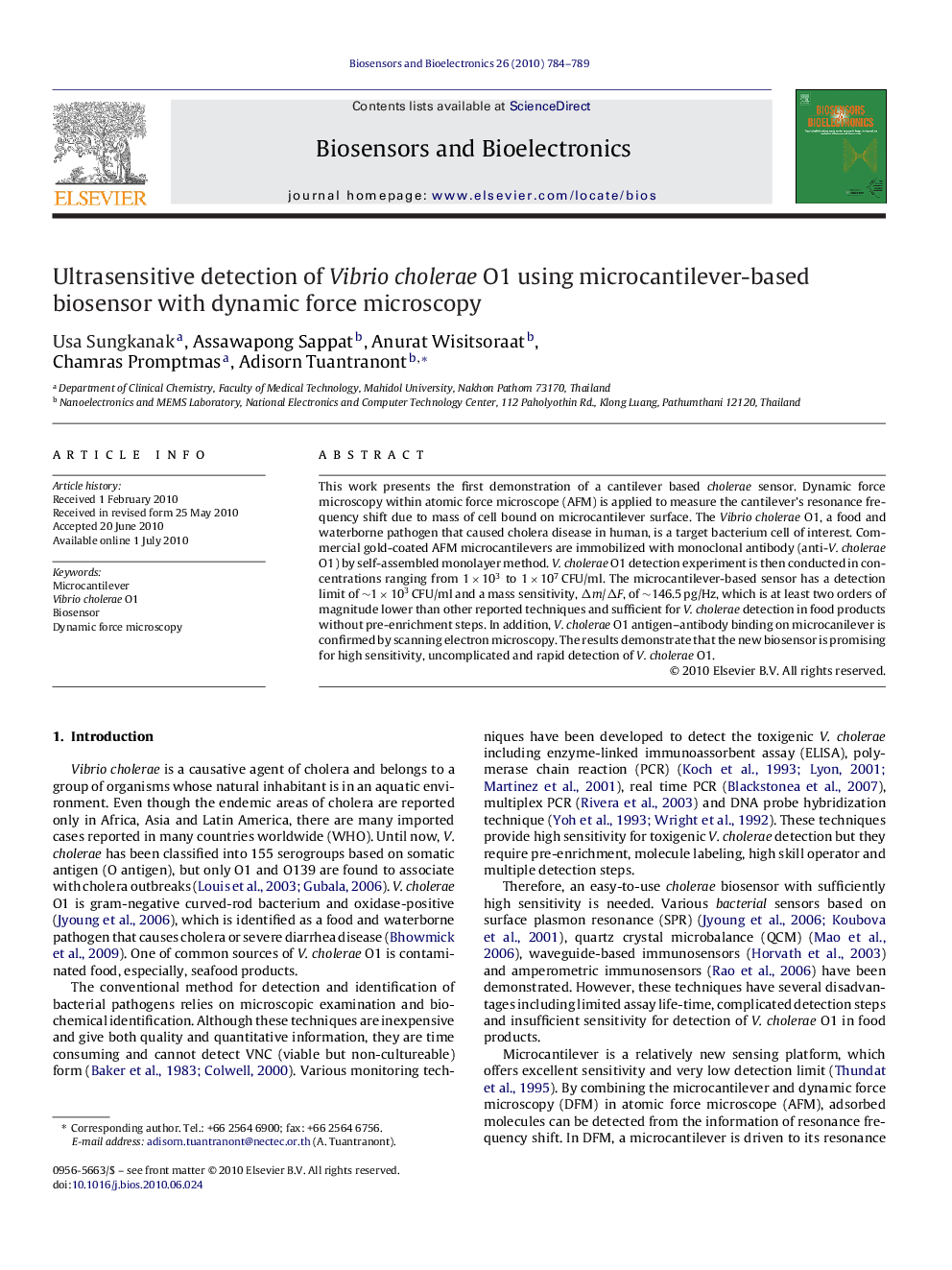| Article ID | Journal | Published Year | Pages | File Type |
|---|---|---|---|---|
| 868608 | Biosensors and Bioelectronics | 2010 | 6 Pages |
This work presents the first demonstration of a cantilever based cholerae sensor. Dynamic force microscopy within atomic force microscope (AFM) is applied to measure the cantilever's resonance frequency shift due to mass of cell bound on microcantilever surface. The Vibrio cholerae O1, a food and waterborne pathogen that caused cholera disease in human, is a target bacterium cell of interest. Commercial gold-coated AFM microcantilevers are immobilized with monoclonal antibody (anti-V. cholerae O1) by self-assembled monolayer method. V. cholerae O1 detection experiment is then conducted in concentrations ranging from 1 × 103 to 1 × 107 CFU/ml. The microcantilever-based sensor has a detection limit of ∼1 × 103 CFU/ml and a mass sensitivity, Δm/ΔF, of ∼146.5 pg/Hz, which is at least two orders of magnitude lower than other reported techniques and sufficient for V. cholerae detection in food products without pre-enrichment steps. In addition, V. cholerae O1 antigen–antibody binding on microcanilever is confirmed by scanning electron microscopy. The results demonstrate that the new biosensor is promising for high sensitivity, uncomplicated and rapid detection of V. cholerae O1.
